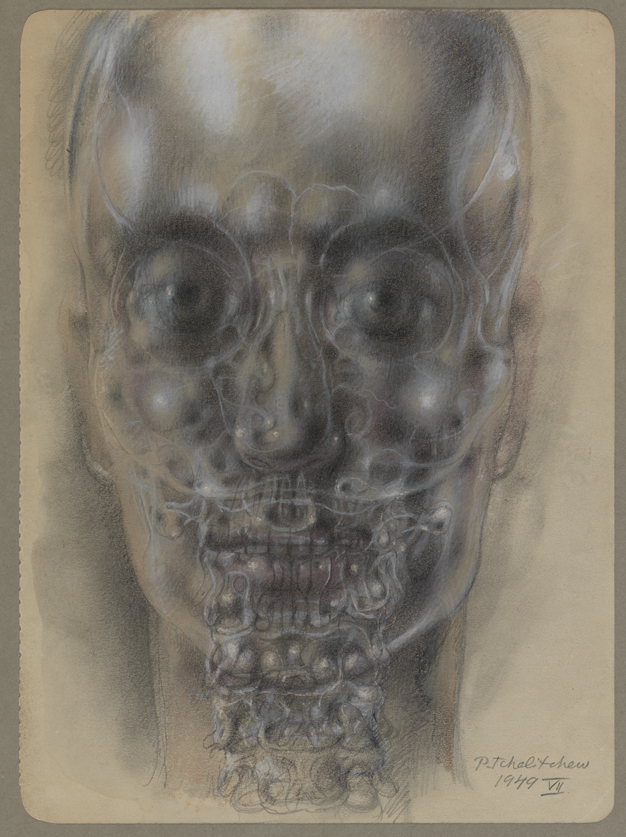
Interior Landscape VII (Skull)
Pavel Tchelitchew
Pavel Tchelitchew enjoyed international attention from the mid-1920s until his death in the late 1950s. He was the subject of survey exhibitions at the Wadsworth Athenaeum, the Museum of Modern Art, and had three solo exhibitions at the renowned Julien Levy Gallery, New York. In 1926, Tchelitchew first became associated with a group of artists called the Neo-Romantics, which included Christian Berard, Kristian Tonny, and fellow Russian emigres, the brothers Leonid and Eugene Berman. Reacting against what was sometimes considered the cold, impersonal quality of modern abstract art, the Neo-Romantics believed that art must return to the exploration of the human condition and emotions. Indeed, Tchelitchew looked back in art history for inspiration to important figures like Leonardo and Michelangelo. The symbolic landscapes he created also evoke the work of Bosch and Breughel. Tchelitchew has sometimes been categorized as a Surrealist, but he was never an official member of the group.
In the early 1940s, Tchelitchew became obsessed with human anatomy and the anatomical studies of Leonardo. Believing that the body mirrored the immensity and intensity of the universe, the artist depicted the human form as if it were possessed by an otherworldly light and energy. "Interior Landscape VII (Skull)" is part of this body of work. Here, an ethereal light emanates from strategic points on the skull.
Artist
Date of Birth
(1898-1957)
Date
1949
Medium
Crayon, pencil, and watercolor on paper
Dimensions
12 x 8 1/2 in. (30.48 x 21.59 cm.)
Accession #
2003.17
Credit Line
Gift of Richard A. Lee in honor of Richard C. Friedman, M.D.
Copyright
© artist or artist's estate
Category
Subject
More by
We're so excited you're planning to visit PAFA!
Make time for art — visit us Thursday to Sunday.
Before reserving your tickets, please review helpful information about museum hours, accessibility, building access, and special admission programs.
If you have any questions, feel free to reach out to us at visitorservices@pafa.org — we’d love to help!